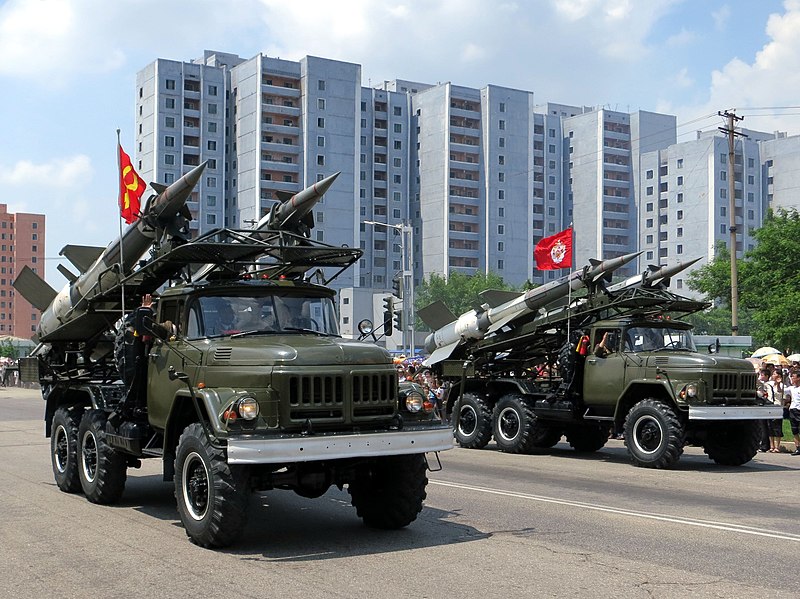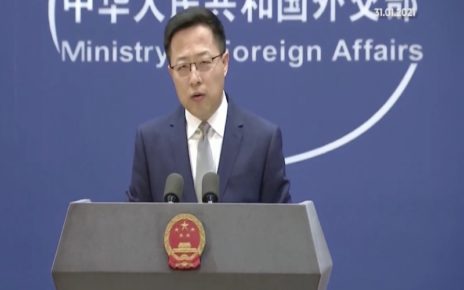Abstract:
Given North Korea’s recent advancement in its nuclear weapons development program, should South Korea finally acquire the nuclear bomb? In this article, Program Editor Mark Davis Madarang Pablo analyzes the prospects of Seoul becoming a nuclear-armed state and provides policy options for the United States and the broader NATO Plus Alliance to assist in maintaining strategic stability on the Korean Peninsula.
Oppenheimer Dilemma Redux
While Christopher Nolan’s blockbuster movie Oppenheimer took the arts world by storm for its cinematic recounting of the Manhattan Project, nuclear politics and the threat of nuclear war is once again heating up on the Korean Peninsula. North Korea has revised its nuclear policy and made significant strides in its nuclear weapons development program. In September 2022, Supreme Leader Kim Jong Un approved a new law on nuclear weapons that enshrined Pyongyang’s right to use preemptive nuclear strikes and rendered its nuclear status “irreversible.” North Korea also tested various new types of nuclear weapon delivery systems aimed at targeting three “NATO Plus” alliance member states, namely South Korea, Japan, and the United States: the 600mm multiple-launch rocket system (MLRS), four Hwasal-2 strategic cruise missiles, the Haeil-2 Unmanned Underwater Nuclear Attack Boat, and Hwasong-18 solid-fuel intercontinental ballistic missile (ICBM), which is projected to have long-range nuclear strike capability, giving it the ability to strike the U.S. mainland. Then, in August 2023, Kim appointed General Ri Yong Gil to replace Chief of the General Staff Pak Su Il, calling for the expansion of weapons production capacity and urging the Korean People’s Army (KPA), during the recent Central Military Commission meeting, to prepare for the possibility of war.
Against the backdrop of Pyongyang’s increasing belligerence, a conservative new South Korean president, Yoon Suk Yeol, won the elections in Seoul on March 9, 2022. He vowed to strengthen national security, forge stronger security ties with the United States, usher in a new era of détente with Japan, and adopt a more confrontational posture against North Korea. Interestingly, he was the first to bring the nuclear discourse into mainstream politics – the notion that Seoul might consider calling for the United States to redeploy its nuclear weapons to the Korean Peninsula or even develop its own nuclear bomb as a deterrent against its hostile neighbor. On this particular issue, the general public is on Yoon’s side; based on the public opinion survey conducted by Chicago Council on Global Affairs on February 21, 2022, the majority of South Koreans support the deployment of nuclear weapons, with 71 percent of respondents favoring their country developing its own nuclear arsenal and 56 percent favoring the deployment of U.S. nuclear weapons. However, the general public overwhelmingly favors an independent armament (67 percent) over a U.S. deployment (9 percent), when forced to exclusively choose between these two possibilities.
Deterrence as the Latest Strategy
Should Seoul finally give into the rising popularity of nuclear weapons in Korean society and acquire the bomb as its ultimate deterrence weapon? Ultimately, North Korea’s latest fundamental nuclear policy shift and rapid technological development in its nuclear capabilities for enhanced combat provides Seoul with politico-legal justification to explore different types of nuclear deterrence capabilities. Policymakers in Seoul have three options along what Jennifer Lind and Daryl Press dub the “nuclear continuum.” This is quite similar to the set of options made available to NATO member states in Europe since the height of the Cold War with the Soviet Union in the 1960s: On one end of the spectrum, an ally invokes the deployment of U.S. nuclear weapons on its soil to bolster Washington’s extended deterrence and dissuade its security ally from developing its own nuclear arsenal (e.g. Greece). In the middle of the spectrum, a security ally enters into a nuclear sharing agreement wherein the military assets of the security ally will be trained and equipped with U.S. weapons, and that control over these weapons will be transferred to the security ally during wartime (e.g. Belgium, Germany, Italy, the Netherlands and Turkey). On the other end of the spectrum, the ally will develop its own nuclear arsenal to maximize its nuclear deterrence capability and reduce its dependence on U.S. extended deterrence (e.g. UK and France).
Along this “nuclear continuum,” South Korea is moving towards the first option when President Yoon successfully secured a landmark deal dubbed as the Washington Declaration with President Joe Biden during the former’s state visit to the White House in April 2023. Under the joint declaration, Seoul and Washington will: come up with a shared decision-making framework for the use of nuclear weapons, form a Nuclear Consultation Group (NCG) that will conduct activities, such as joint nuclear planning and execution of U.S. nuclear contingency operations and joint military exercises between the Republic of Korea’s (ROK) Armed Forces and the U.S. Strategic Command, and revive the stationing of U.S. strategic assets on the Korean Peninsula, such as nuclear-armed submarines and nuclear-capable bombers.
This strategy commenced when the United States sent long-range, nuclear-capable B-52 bombers to participate in joint aerial drills with South Korean fighter jets in June, 2023. Subsequently, the USS Kentucky—an Ohio-class submarine carrying 20 Trident II D5 missiles, each capable of delivering up to eight (8) nuclear warheads within 12,000 kilometers—docked in Busan port that same month. The routine deployment of these strategic assets reinforces the credibility of Washington’s commitment to the defence of South Korea—a fair and reasonable bargain that could help bolster Seoul’s nuclear deterrence posture amid Pyongyang’s nuclear threat escalation while incentivizing it to remain within the Nuclear Non-Proliferation Treaty (NPT) regime in the immediate term.
Towards a Nuclear South Korea?
Looking at the strategic horizon, however, South Korea’s nuclear risk calculus could change dramatically based on its future domestic political trajectory and the external defence posture of the United States, its principal security ally and guarantor of extended deterrence. The following two (2) scenarios could provide the impetus for the country’s transition towards the third option (i.e. domestic development of nuclear weapons) in the medium- to long-term:
First, the United States’ extension of indirect politico-military support to Ukraine (as well as other Central and Eastern European countries) through NATO, preventing and countering Russia’s territorial expansionism, could affect Washington’s overall force projection and crisis management abilities in response to China (and North Korea) along the First Island Chain in East Asia. The U.S. 2022 National Security Strategy and 2022 National Defence Strategy clearly outline the top global priorities of the White House under President Joe Biden: “out-competing China and constraining Russia.” In principle, this would require a more balanced distribution of military conventional and nuclear forces along two major theaters of operations: Eastern Europe and the Indo-Pacific. If President Biden gets reelected in 2024, one can expect continuity of his administration’s internationalist policies expressed in these documents.
However, if Russia effectively circumvents Western-imposed economic sanctions and enhances its cooperation with other powers, such as China, India, Turkey, and rogue states, such as Iran, North Korea, Syria, Venezuela, and Cuba, President Vladimir Putin may be able to prolong his war in Ukraine. Furthermore, he may continue to utilize Moscow’s huge nuclear arsenal along with its offensive cyber capabilities and extensive network of paramilitary groups as bargaining tools to extract political concessions from the West (e.g. scaling down political, military, and economic support for Ukraine and other former Soviet republics, such as Georgia and Moldova, which were once in the Soviet sphere of influence) and reassert “great power” status. With these possible courses of action from Russia, the United States might then be compelled to divert its strategic focus, re-allocate material and financial resources, and re-deploy more of its conventional and nuclear forces to NATO’s Eastern European flank.
Consequently, this scenario would increase the vulnerability of South Korea (and other East Asian countries within the U.S.-led security network). Here, China (and North Korea) could exploit such a window of opportunity to pressure Seoul to downgrade its defence ties with the United States and undermine the international rules-based order on the Western Pacific flank. A similar scenario of “strategic schizophrenia” during the administration of former President Barack Obama—promising U.S. focus on East Asia to counterbalance China but getting dragged into the Middle East and North Africa (MENA)—is a historical precedent that deserves careful attention. To recall, the United States’ previous entanglement in multiple counterterrorism operations against the Islamic State and costly state-building in Iraq and Afghanistan in MENA may partly explain Washington’s underinvestment in Southeast Asia’s maritime security and limited troop rotational presence in the region at a time when China is modernizing its military at a rapid pace and is beginning to flex its muscle against its smaller neighbors. Faced with minimal Philippine naval and coast guard presence and limited U.S. extended deterrence, Beijing seized the Scarborough Shoal from Manila in 2012 and embarked on artificial island construction and militarization of the Spratly Island Group in the South China Sea from 2013 to 2015. These incidents should serve as a lesson for policy-makers in Seoul—that the United States’ global military reach has its limits, that it may not be fully present and engage in defending its allies on two fronts at the same time.
More worrying is the dangerous revival of Trumpism, which emphasizes transactional “rebalancing of financial commitments” at the expense of values-based multilateral cooperation, defence diplomacy, and collective security. If former President Donald Trump takes the helm of American political leadership in the White House next year, South Korea will have to prepare for the possibility of the United States renegotiating (or reneging on altogether) its global security alliance commitments, following the “Cost Plus 50” formula, commencing troop drawdowns and/or dismantlement of forward operating bases – as happened in the Doha Agreement with the Taliban terrorists in Afghanistan in 2020 – and compelling allies to pay a portion of the bill for the nuclear security umbrella, as demonstrated by Trump’s controversial dealings with South Korea and Japan in 2020. The potential high price tag of remaining within the U.S. security alliance will provide a further boost to Seoul’s champions of Defence Reform 2.0, which aims to build a more self-reliant and technologically advanced military force capable of launching rapid and decisive joint operations. Furthermore, this will give the advocates of domestic nuclear weapons development, such as Kim Tae-woo, adviser to former President Lee Myung-bak, among others, the upper hand in calling for nuclear parity with Pyongyang.
Policy Options for the “NATO Plus” Alliance
It is clear why the popularity of the nuclear option has pervaded South Korea: Externally, North Korea’s advancement in its nuclear weapons development policy and program has heightened the risk of a nuclear war on the Korean Peninsula. Internally, skepticism about the enduring credibility and commitment of the United States as the guarantor of strategic stability in the region has remained despite the recent gains made during the state visit of President Yoon to the White House. Hence, the best-case scenario is for the United States to continuously play a stabilizing role both in raising the prohibitive cost for Pyongyang to launch a conventional or nuclear attack on South Korea, as well as preventing nuclear proliferation in East Asia, which could be susceptible to tactical miscalculations with disastrous strategic consequences. The United States must continue to honour its security commitments enshrined in its alliance with South Korea which includes full implementation of the major stipulations of the Washington Declaration. This will bolster Seoul’s extended deterrence capability and assuage its fears of abandonment, especially in times of national security crises, and disincentivize it from abandoning the NPT regime.
To complement American efforts, other members of the “NATO Plus” alliance must strengthen cooperation with South Korea, such as in the field of intelligence to gain more accurate situational awareness of Pyongyang’s progress on its nuclear weapons development policy and program, and hence, come up with effective countermeasures. Interestingly, Seoul, Washington, and Tokyo recently resumed their trilateral intelligence sharing—a major defence diplomatic breakthrough after South Korea-Japan bilateral relations turned sour over the past years due to unresolved controversial issues pertaining to forced wartime labor and a radar-locking incident in 2018. Looking forward, it is compelling to anticipate Seoul and Tokyo’s permanent membership into the Five Eyes Plus intelligence cooperation framework.
Furthermore, the “NATO Plus” alliance must support South Korea’s plans to establish a new Strategic Command that will have control over its 3K Defence System. This will be tasked with operationalizing the country’s multi-layered air and missile defence systems capable of thwarting preemptive or retaliatory North Korean missile strikes. Currently, Seoul possesses Patriot and THAAD missile defence systems that could neutralize North Korea’s short-range ballistic missile threats. Looking forward, the alliance must provide technological, informational, and logistical assistance to Seoul’s ongoing R&D on the other layers of its defence umbrella akin to Israel’s Iron Dome missile and Iron Beam laser defence systems to counter Pyongyang’s long-range artillery and multiple rocket launcher threats. In addition, the alliance must synergize its emerging Defence Innovation Accelerator for the North Atlantic (DIANA) ecosystem with that of South Korea’s thriving defence industry to come up with new cutting-edge systems able to counter North Korea’s hypersonic missile threats, and exploit Artificial Intelligence, Big Data and drone technology to analyze and cripple the latter’s nuclear critical infrastructure and financial/money laundering networks in the event of war.
Lastly, the “NATO Plus” alliance must explore various options through which it can further expand military-to-military cooperation for seamless sharing of best practices and enhancement of interoperability in case of a conventional and nuclear armed conflict with North Korea. On April 17, 2023, South Korea, the United States, and Japan conducted a Joint Missile Defence Exercise to enhance detection, tracking, and information-sharing on incoming North Korean ballistic missiles involving Aegis destroyers. Then, on May 25, 2023, South Korea and the United States held their largest-ever firing exercises dubbed Combined Annihilation Firepower Drills featuring 2,500 troops and 610 weapons systems. In the future, Indo-Pacific powers within the alliance such as Canada, Australia, and New Zealandmay consider entering into similar bilateral and multilateral agreements with South Korea for increased personnel training and exchange, joint military exercises, and troop rotational presence to ensure combat readiness.
In the event that the U.S. commitment to South Korea falters due to any of the aforementioned political-security risks, namely the prolongation of war with Russia or the possible return of Trumpism to power, other nuclear-armed states within the “NATO Plus” alliance, such as UK and France, must step up as the new “Concert of Powers” that shall fill the political-security vacuum to be left by Washington as Seoul’s guarantor of nuclear security. Alternatively, this should provide the impetus for the alliance to support Seoul’s domestic nuclear weapons development as its last resort in bolstering its nuclear deterrence posture and maintaining strategic stability. In compliance with the stipulations of membership withdrawal under Article X of the NPT, South Korea will have to clearly articulate its case with other NPT member parties that it has no pre-existing NPT violations, and that it is doing so out of good faith, as a sovereign act of self-defence against North Korea’s repeated provocations that jeopardize its “supreme national interests.” Under such a worst-case scenario of U.S. abdication of global political-security leadership, withdrawal from the security alliance network, and dismantlement of its nuclear security umbrella in East Asia, a nuclear-armed, democratic South Korea that is capable of defending itself from the full spectrum of conventional and nuclear threats against North Korea and backed by the remaining members of the alliance could be our last best hope in the preservation of regional peace and stability and in the defence of the international rules-based order in the Korean Peninsula.
Photo: S-125 Pechora – North Korea Victory Day (2013) by Stefan Krasowski via Creative Commons licensed under CC Attribution 2.0 Generic.





